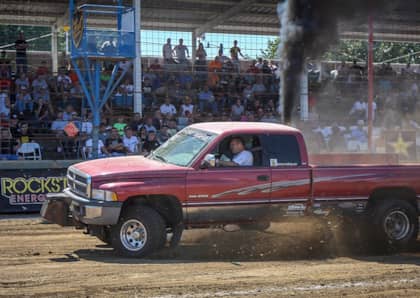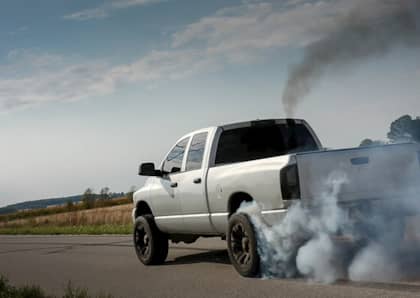Killing Myths About Runaway Diesels
There’s been a lot of buzz lately on social networks around videos of diesel trucks that are bellowing white smoke and suddenly die. No, the truck isn't doing a huge burnout. Chances are, you’re witnessing a runaway diesel engine. And no, it’s not a problem with just Power Strokes or Duramaxes or Cummins, so drop the brand-bashing banter. It can happen to any diesel engine in any vehicle, but more commonly in turbo-diesel applications.
So before you go commenting away on that video in your newsfeed about how much better your Chevy is than the Ford, quickly read up on what a runaway exactly is, and more importantly, how to stop it if it ever happens to you. In order to stop a runaway diesel engine, you must either cut off the air supply or the fuel supply. Since it’s drawing fuel from some unknown source, the easier option is to cut off the air supply. Finding something to block off the intake can slow down the RPM and stop the engine from running.
First thing's first: What is it, exactly?
To put it simply, a runaway diesel engine is a rare condition where the engine draws fuel from an unintended source, causing it to increase the RPM until the unintended fuel source runs out or catastrophic failure occurs in the engine. A more detailed description makes things a bit easier to understand:
Many lubricants found in an engine share similar properties to diesel fuel, including motor oil. A common example of motor oil causing a runaway condition occurs in turbo-diesel applications where there is a failure of the oil seals inside the turbocharger.
A blown seal can cause motor oil to be drawn into the turbocharger intake, and subsequently burned inside the combustion chamber. This creates a positive-feedback loop, in which the RPM increases well beyond redline, drawing in more oil from the blown turbo seal, and continuing on until catastrophic failure occurs as a result of overspeeding the engine.
Although this a rare condition, and not the only way in which a runaway occurs, it does happen from time to time. Other ways a diesel can runaway are by failed injection systems or excess blow-by causing the oil to vaporize and enter the intake.
OK, so what if it happens to me?
Remember, we’re dealing in hypotheticals here. I’m not a mechanic, and you should take caution in any situation should it ever occur to you. A runaway diesel is a very dangerous situation due to the immense forces on the engine itself. But the good news is, there is a way to hypothetically stop it before it’s too late.
Because of the way a diesel engine operates, simply turning the key off to kill the ignition has zero effect on stopping a runaway. A diesel engine only needs fuel and air to create combustion, and the more fuel is delivered, the faster the engine revs.
So, in order to stop the engine, you must either cut off the air supply, or the fuel supply. Since it can be unclear where the fuel is coming from, it's often easier to cut off the air supply. Blocking off the intake can slow down the RPM and stop the engine before things get really out of hand.
Some people have used rags, t-shirts or even a fire extinguisher to smother the engine, but again, do so at your own risk. Vehicles equipped with manual transmissions can sometimes put the truck into a high gear such as 5th or 6th, and using the brakes and letting off the clutch to stall the engine.
There you have it. Diesel engines have their pros and cons, but this is an incredibly rare condition that doesn’t trump any of the benefits of having a diesel truck. It just makes for really dramatic videos on YouTube and Facebook.











